You might think that by now we would have thoroughly scoured our Solar System for signs of alien life - it is our neighbourhood, after all. But in truth, there's still so much that we don't know about even the planets and moons we've visited.
So, if we're looking for alien life in our Solar System, where's the best place to start?
What kind of alien life are we looking for?
All life on Earth needs three things: DNA and RNA for storing genetic information; proteins for making structural components of a cell and running biochemical reactions;and fatty lipid molecules that make up an outer membrane of a cell. We therefore know that this chemical system works for biology, but when searching for life on other worlds it’s important to not be too blinkered by the terrestrial example: alien life could be very different from us.
Based on the fundamentals of chemistry, life in the Solar System is thought most likely to be built from organic (carbon-based) molecules, and use water as the solvent (although perhaps life on Titan uses ethane instead). The instruments we design for probes sent to other worlds therefore look for complex organic molecules in general, rather than specific compounds like DNA.
A lot of the work of space missions is about trying to understand what the environment on other planets and moons is like – or was like billions of years ago – and whether these conditions could be habitable for life.
Our understanding of the survival limits of terrestrial life is informed by studies of extremophiles – ultra-hardy organisms that tolerate boiling hot or freezing cold temperatures, or high acidity, or punishing levels of radiation, or the desiccating effects of salty surroundings.
Some extremophiles live in environments on Earth that are similar to other worlds. For example, Lake Vostok, buried under the Antarctic ice sheet, helps guide us on the chance of life beneath the surface of the moons Europa or Enceladus.
And tardigrades, the hardiest animals on Earth, have survived all the major extinction events, can come back to life after losing 99 per cent of the water in their body, and have even been known to survive for 10 days exposed to the vacuum and radiation of space.
Read more about alien life:
- What do aliens look like? Animals on Earth may hold the answer
- Did we find signs of alien life in the clouds of Venus? Here’s what the experts say
The best places to look for alien life in our Solar System
Venus
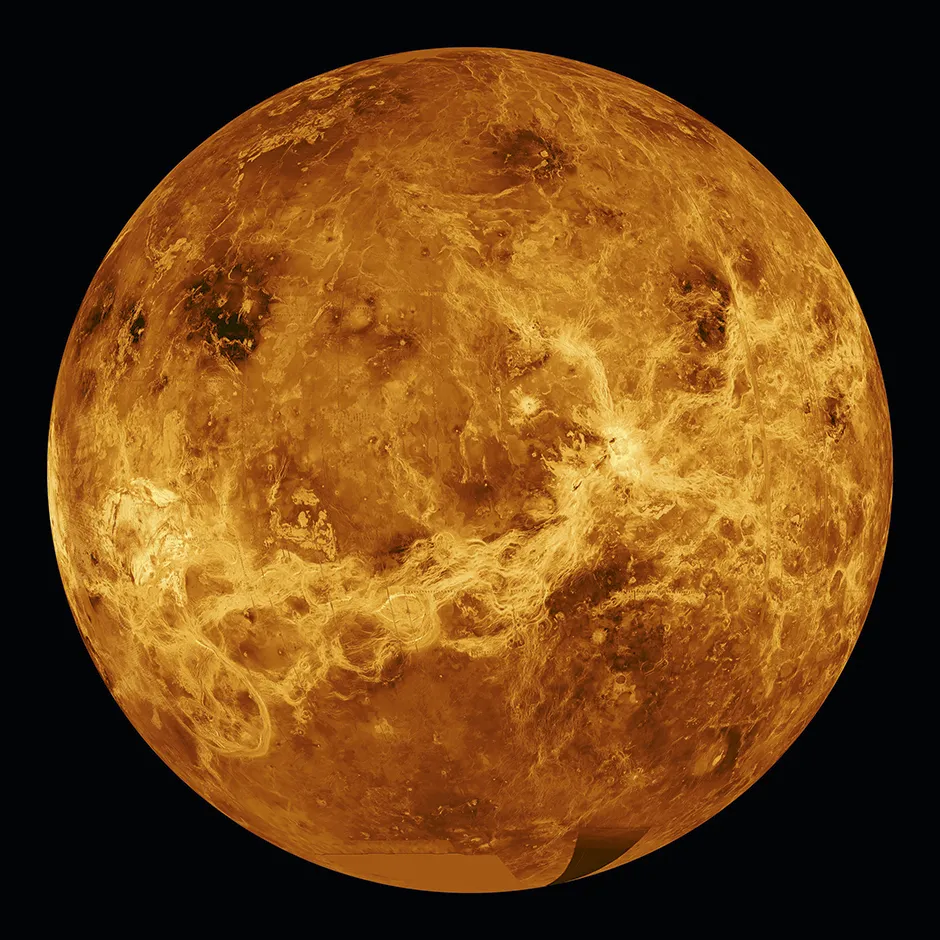
Location: 108 million kilometres from the Sun
Pros: May have harboured oceans for a long time
Cons: Hellishly hot on surface, clouds of concentrated sulphuric acid
Missions planned: DAVINCI+ (2026 launch, not confirmed)
You’d have to have been living under a rock on a distant planet to have missed the news in September 2020 about the unexpected – and as yet unexplained – discovery of the gas phosphine in the atmosphere of Venus.
By October, there were some doubts creeping in about whether phosphine had really been detected, but either way there’s definitely some previously unknown chemistry going on in the Venusian atmosphere. Perhaps it could even be biochemistry – is the phosphine a telltale signature of Venusian life?
The problem with Venus, at least for astrobiologists, is that it’s a truly hellish world. The planet is smothered in an exceptionally thick atmosphere of carbon dioxide, which creates a powerful greenhouse effect. The surface temperature is over 460°C: hot enough to melt lead.
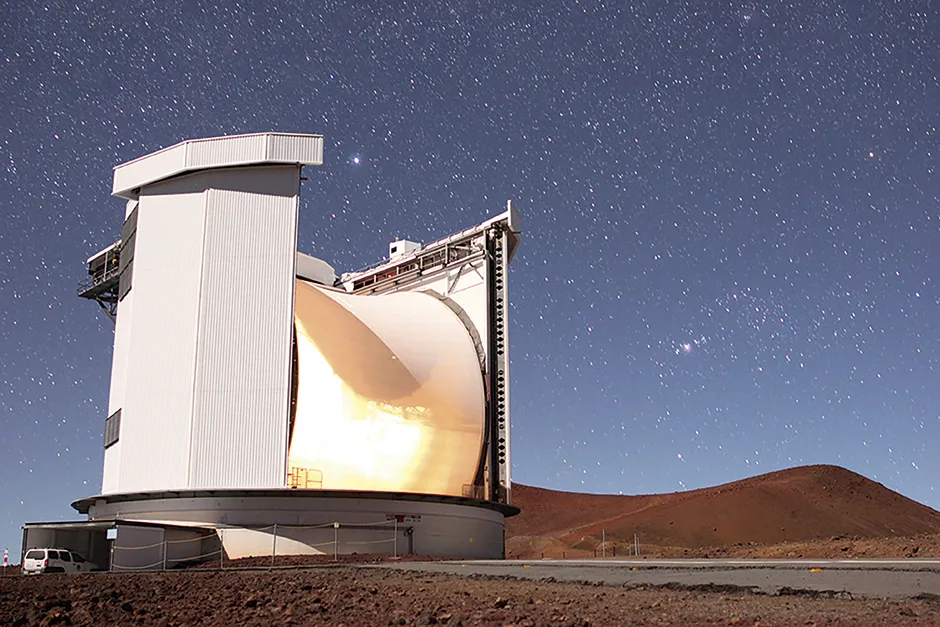
As you rise to higher altitudes the temperature grows cooler (just as experienced by mountain climbers on Earth), and by around 55km the temperature and pressure are similar to Earth’s surface: T-shirt weather. But the droplets making up the clouds here are concentrated sulphuric acid – far more extreme than could be survived by any hardy life known on Earth.
Perhaps Venusian life – if it exists – evolved to tolerate much higher acidities than us wimpy terrestrials, and migrated up into the cloud layer from ancient oceans before the planet underwent its runaway greenhouse effect.
But no matter how unlikely the prospect of life in an aerial biosphere on Venus might be, the discovery has certainly stoked interest in the further exploration of the planet. Luckily, there’s already a mission being considered by NASA’s Discovery Program.
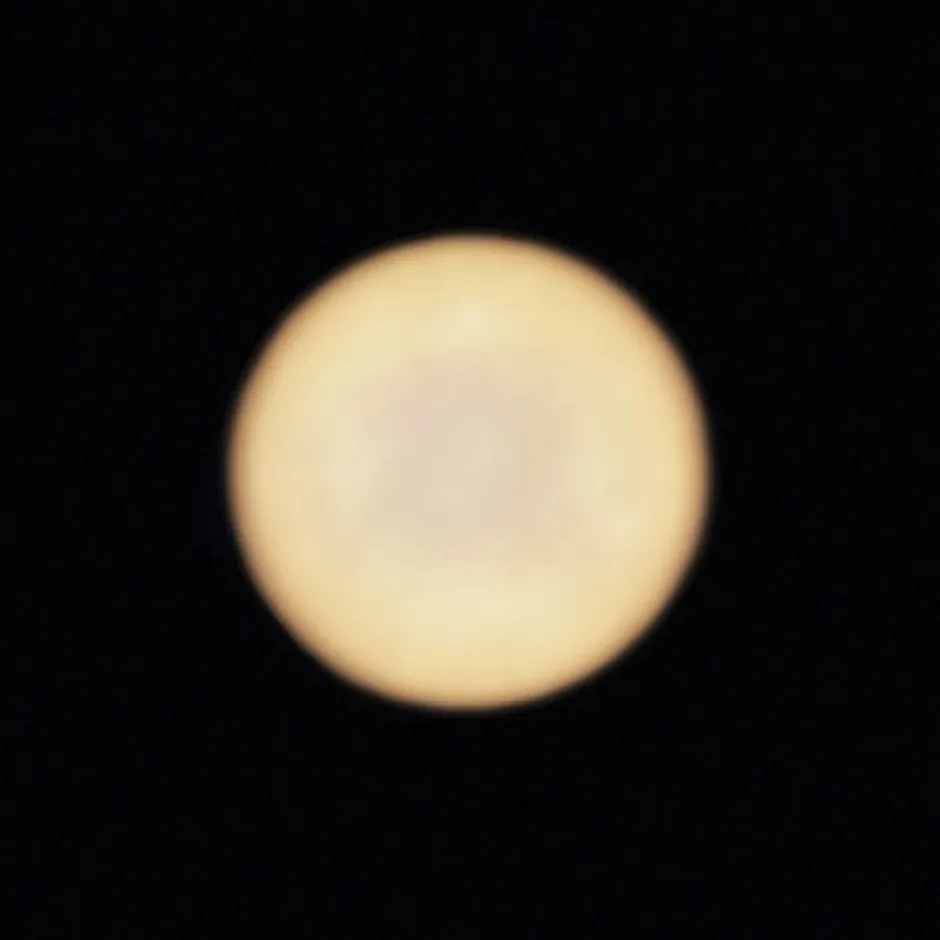
DAVINCI+ was shortlisted at the beginning of 2020, and if selected could launch as early as May 2026. The mission will release a probe into the Venusian atmosphere that will take measurements with its sensitive spectrometer instruments as it parachutes down.
Dr Melissa Trainer, a space scientist at the NASA Goddard Space Flight Center, helped propose DAVINCI+. “Finally we’ll get a clear picture of the mix of gases down through the atmosphere from the cloud-tops to the near-surface,” she says.
For example, DAVINCI+ will make detailed measurements of water vapour in the atmosphere, and so hopefully will reveal how much water the planet has lost over its history, and for how long it might have possessed an extensive ocean. And with any luck, it’ll get to the bottom of the phosphine mystery.
“I think it’s urgent to get back to our sister planet Venus now, and to take the right measurement tools with us so we can decipher what is going on in its atmosphere,” Trainer says.
Mars
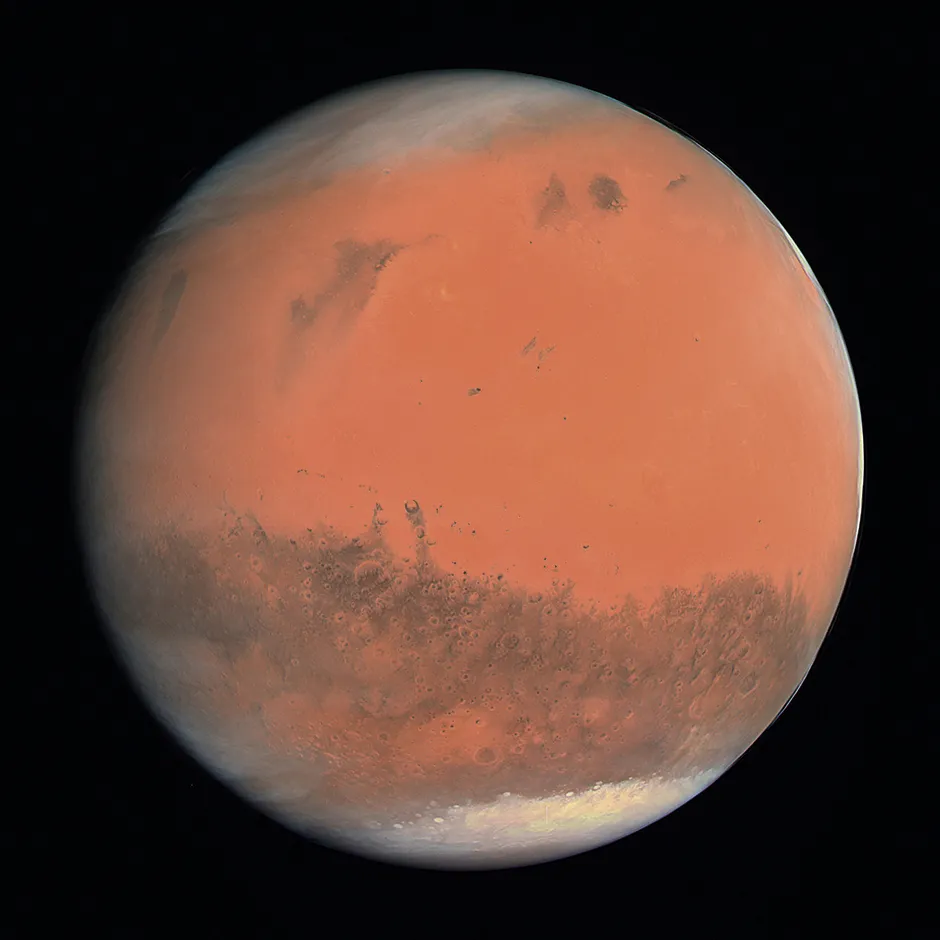
Location: 228 million kilometres from the Sun
Pros: Extensive evidence of ancient liquid water, organic molecules, energy sources
Cons: Extremely cold and dry surface
Missions planned: Tianwen-1, Al Hamal, Perseverance (en route); Rosalind Franklin (2022 launch)
While some 19th-Century astronomers may have convinced themselves they could see canals criss-crossing the surface of Mars, our first close-up look at the Red Planet with flyby probes in the 1960s plainly revealed the Martian surface to be a freeze-dried desert.
Mars has a thin atmosphere, which means it is exceedingly cold. Liquid water isn’t stable over most of its surface, and it is also bathed in ultraviolet radiation from the Sun.
But Mars hasn’t always been this inhospitable – there are extensive signs of ancient river valleys, deltas, lakes, and possibly even an ocean over its northern hemisphere, which indicate a warmer, wetter primordial Mars. Did life get started during this earliest phase of the planet’s history, and might ‘biosignatures’ of these microbes remain preserved in sedimentary deposits?
Scientists interested in the chances of life on Mars explore extreme environments here on Earth, and investigate what sorts of microorganisms are able to survive. Dr Claire Cousins is an astrobiologist at the University of St Andrews.
“While nowhere on Earth can be exactly like Mars, there are places that have enough similarities to make them valuable comparisons,” she says. “If you wanted to get a feel for what the bone-dry Martian surface is like today, you could go to the Atacama Desert in Chile. Alternatively, to understand the environment of early Mars – some three to four billion years ago – you could study volcanically active places like Iceland.”
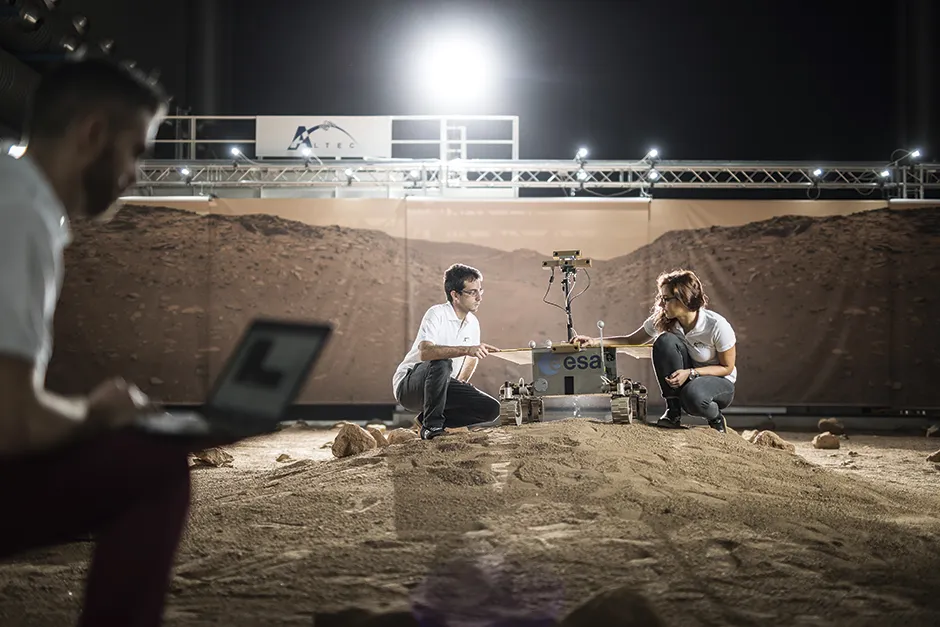
Mars is exciting not only because it seems to have once offered a habitable environment for life, but being our planetary neighbour it is relatively easy to get to and explore with robotic probes. In July 2020, no fewer than three separate missions were launched to Mars: China’s Tianwen-1 orbiter and rover, the United Arab Emirates’ Al Amal orbiter, and NASA’s latest car-sized rover, Perseverance.
And when the launch window next opens in 2022, the European Space Agency (ESA) and Russia’s Roscosmos will be sending their own biosignature-hunting robot, the ExoMars rover Rosalind Franklin.
Cousins is also a member of the camera team for ExoMars. “The next rovers heading for Mars will probe the chemistry of Martian rocks in incredible detail. This is important because we’re trying to find evidence of tiny microscopic life that lived a few billion years ago – not easy!” she says.
“We’ll be looking for trace amounts of organic material left behind by any microorganisms that have been preserved that whole time.”
Enceladus
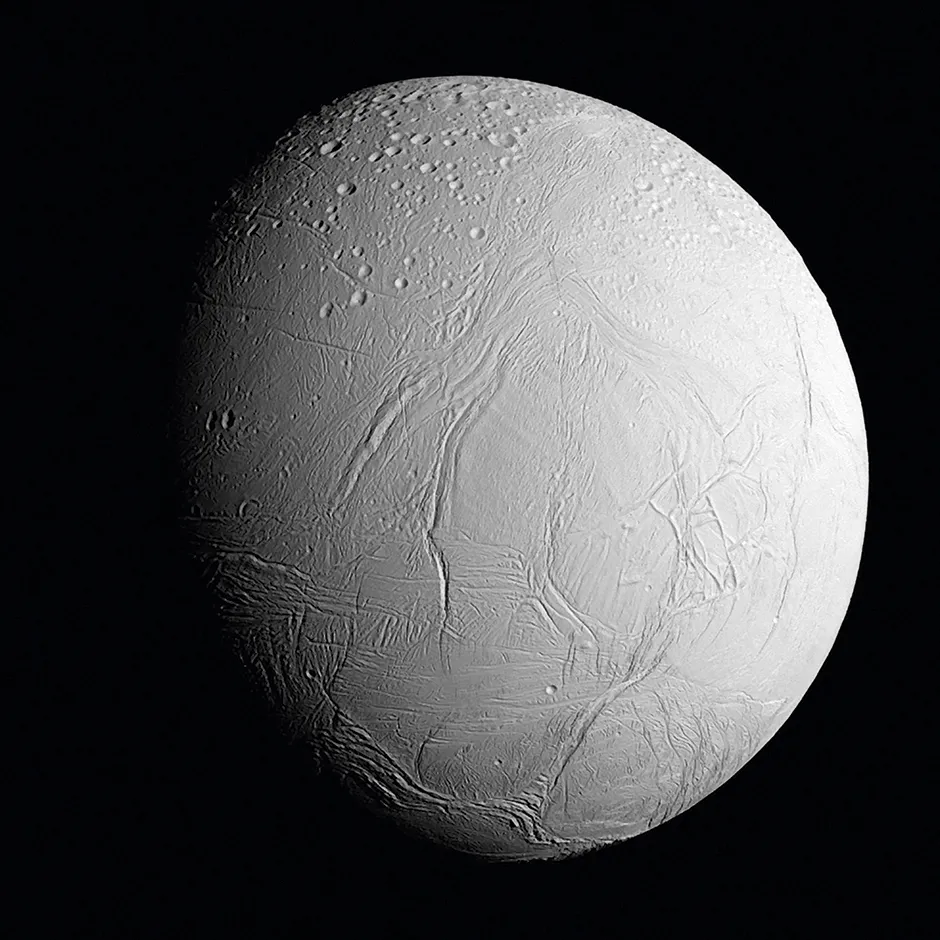
Location: Saturn system; 1,400 million kilometres from the Sun
Pros: Subsurface sea, organic chemistry, energy sources
Cons: Sealed beneath ice shell
Missions planned: None currently selected
Enceladus, one of Saturn’s moons, is a tiny snowball of a world. Its diameter would fit comfortably between London and Edinburgh, its minuscule gravity cannot cling onto any meaningful atmosphere and its surface is hard-frozen ice. Astrobiologists didn’t give it a second’s thought, until a surprise discovery in 2005.
The Cassini probe saw that fractures near the moon’s south pole were spewing glittering geysers of water ice out into space. Over time, the out-jetting of these ice crystals have built up the E ring around Saturn, and it’s believed they are being squirted from a large body of liquid water lying beneath the moon’s icy crust.
After this stunning discovery, Cassini was ordered to skim low over the surface of Enceladus and plunge straight through these diffuse water jets to analyse their composition. The fountains were found to contain sodium and grains of silica-rich sand – Enceladus’ sea is salty, and this is important because it means the water must be in contact with the rocky core of the moon to dissolve out minerals.
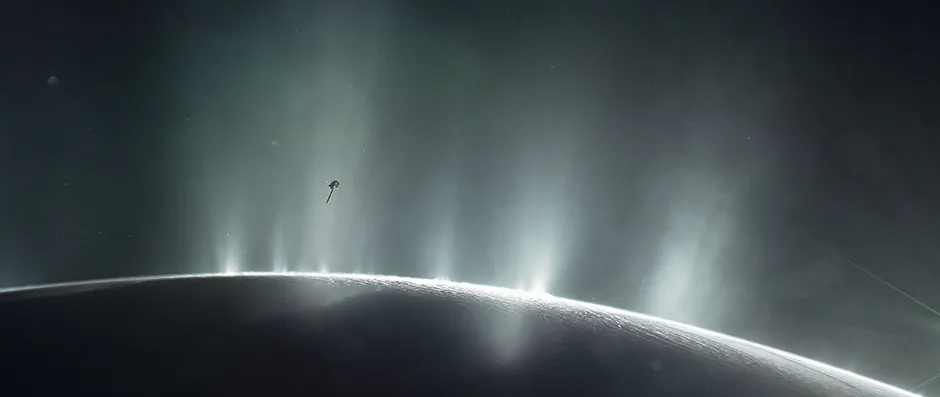
Cassini also detected simple organic compounds like formaldehyde and acetylene, as well as some larger molecules. These aren’t signs of life, but are just the sort of precursor chemistry that is thought to be important in the development of biology.
Then, in April 2017 – shortly before the mission ended in a dramatic plunge into the crushing atmosphere of Saturn – the Cassini team announced the discovery of possible hydrothermal activity on Enceladus’s seafloor.
Hydrothermal vents form oases for microbial life in the dark depths of Earth’s oceans, and the hydrogen gas detected in the plumes of Enceladus is an available food source for life. On Earth, certain microbes derive the energy they need by combining hydrogen with carbon dioxide, producing methane in the process.
So Enceladus seems to tick all the necessary boxes for providing a habitable environment suitable for life: liquid water, organic compounds and energy sources.
Several robotic missions for taking a closer look have been proposed in recent years. Enceladus Life Finder (ELF) and Enceladus Life Signatures and Habitability (ELSAH) missions were both proposed to the most recent round of NASA’s New Frontiers Program but lost out to Dragonfly.
Explorer of Enceladus and Titan (E2T) was proposed as a joint ESA-NASA mission, but in May 2018 wasn’t shortlisted for the latest round of ESA’s Cosmic Vision programme. The competition is fierce for the funding of space missions, but there is enough excitement about Enceladus that we will surely return there soon enough.
Read more about extraterrestrials:
- Alien contact: a brief history of extraterrestrial languages
- 10 friendly alien invasion films that will have you welcoming our bug-eyed overlords
Europa
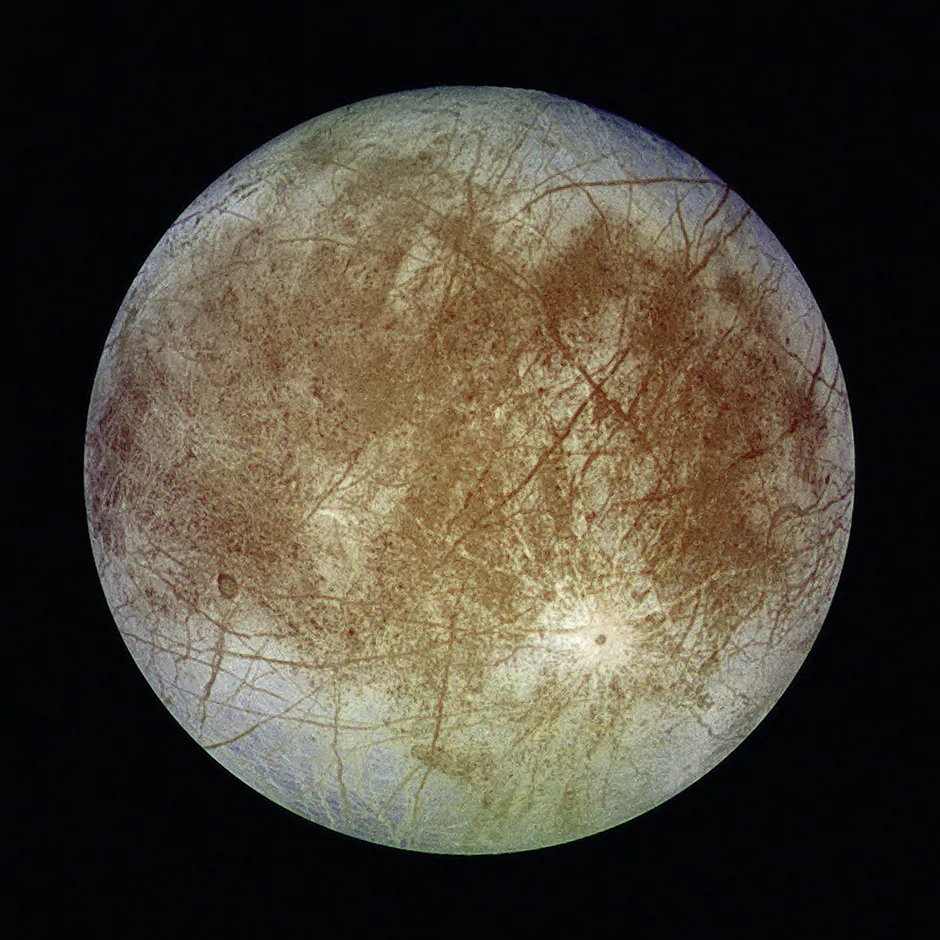
Distance from Earth: Jupiter system; 778 million kilometres from the Sun
Pros: Subsurface sea, possible organic chemistry, possible energy sources
Cons: Sealed beneath ice shell
Missions planned: JUICE (2022 launch), Europa Clipper (2024 launch)
Space probes have revealed the surface of Europa, one of Jupiter’s moons, to be relatively fresh and young. It is scarred by few impact craters, which means the moon is geologically active. Europa is criss-crossed with long fractures from where the moon’s surface is being stretched and flexed by the powerful gravity of Jupiter.
The Galileo orbiter also noticed the moon distorting Jupiter’s magnetic field. This implied that a magnetic field was being created within Europa by an electrically conductive substance – an ocean of salty water beneath Europa’s surface being the ideal candidate.
There even appear to be regions where this ocean may have melted through to the surface, breaking off icebergs, before rapidly freezing over again with exposure to the cold of outer space. Therefore, in terms of the potential habitability of Europa, we know it harbours a great subsurface ocean of liquid water.
But that’s just about all we can be sure of. We don’t know how thick the ice shell on top of the ocean is, or what organic chemistry may be there, or whether there is any hydrothermal activity on the seafloor, or whether the pH or saltiness of the seawater is suitable for life.
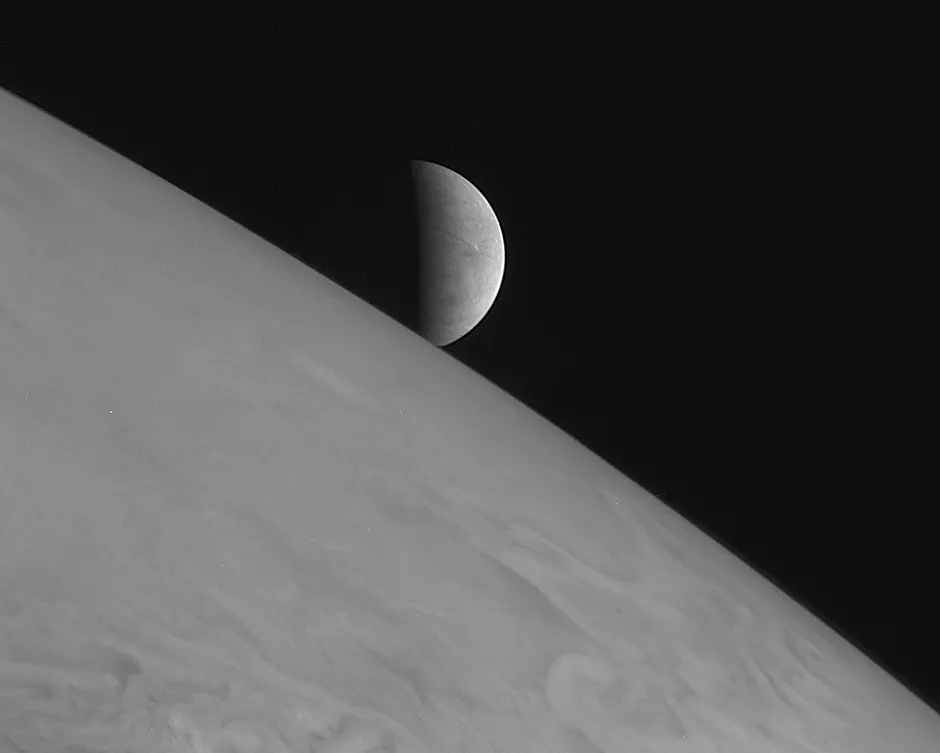
If this ocean is habitable, then Europa offers much better prospects for extraterrestrial life surviving today than Mars (which is now exceedingly cold and dry), but the moon is tricky to explore with robotic probes.
Europa is much further away than Mars or Venus, it orbits within the intense radiation belt of Jupiter, and the moon has no atmosphere for parachuting to the surface. And even if we can get a hardy probe safely down onto the face of Europa, it might need to drill or melt down through many kilometres of rock-hard ice to reach the subsurface ocean.
In some respects, Enceladus would be much easier to check for life because it is conveniently squirting its seawater out into space for us – a probe could swoop through this water plume to collect a sample before looping back to the Earth for analysis. There is hope for Europa, however, after the Hubble Space Telescope spotted what seems to be water plumes erupting from near the moon’s south pole.
ESA’s Jupiter Icy Moons Explorer (JUICE) is launching in 2022, but will only make two flybys of Europa, whereas NASA’s Europa Clipper will make multiple passes of the moon and should launch in 2024. If the Europa Lander mission receives funding it could launch in 2025 and will be able to scoop 10cm into the surface ice to test for signs of life.
Titan
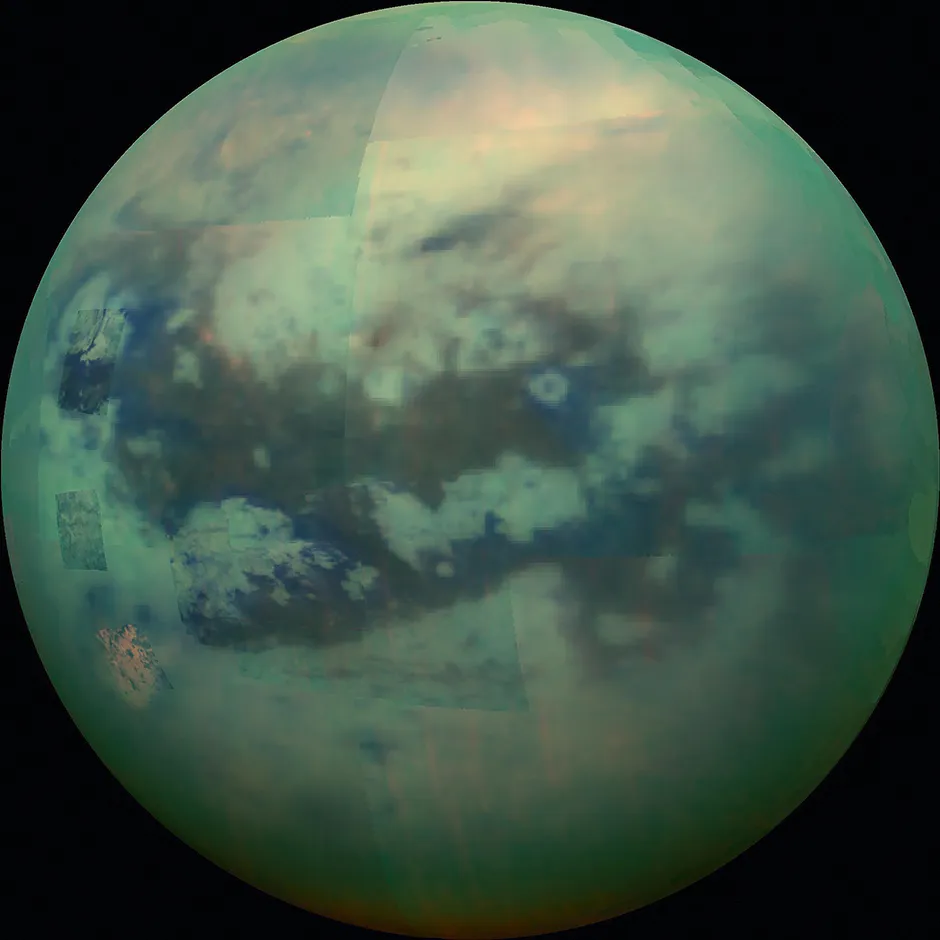
Distance from Earth: Saturn system; 1,400 million kilometres from the Sun
Pros: Geologically active, organic chemistry
Cons: Very cold, liquid hydrocarbons
Missions planned: Dragonfly (2027 launch)
Saturn’s largest moon, Titan, is enormous, larger even than the planet Mercury. When ESA’s Huygens descent probe parachuted down through Titan’s hazy orange atmosphere in 2005, it discovered a landscape with rolling hills, networks of river valleys, and smoothed pebbles strewn across the ground.
Flybys from the Cassini spacecraft subsequently found great lakes and signs of rain near the moon’s north pole. Titan is sodden wet and smothered with the sort of simple organic chemistry thought to have been important for the origin of life on primordial Earth – surely this is a surefire winner for hosting extraterrestrial biology?
The problem with Titan is that it is really cold. It orbits Saturn, nine times further from the Sun than the Earth and so only receives about 1 per cent the amount of solar warming. The surface is a numbing -180°C, and Titan’s rivers and lakes don’t slosh with liquid water, but liquid hydrocarbons like methane and ethane. This means that any life on the surface would have to be ethane-based rather than water-based, and molecules like DNA won’t work. Titan life would be truly alien.
Astrobiologists are keen to return to Titan. In June, NASA selected Dragonfly as the latest mission to be funded by its New Frontiers Program. Dragonfly is a truly innovative endeavour – where other planetary probes have involved a static lander or a rover to trundle slowly across the surface, Dragonfly is an octocopter drone.
Titan’s combination of low gravity and thick atmosphere makes it suited for exploration by air, and the craft will be able to fly faster than 30km/h, and take off and land vertically, giving it an unprecedented capability to pinpoint sites of interest.
Trainer is also deputy principal investigator on this mission. “While Dragonfly is not a life-detection mission, we are going after really fundamental questions about how far prebiotic chemistry may have progressed in this environment. We will characterise the products of millions of years of chemical synthesis, and search for biologically relevant molecules.”
Life beyond the Solar System
There are a handful of planets and moons in the Solar System that may harbour life, but there are an awful lot of other planetary systems out there in our Galaxy.
Since the early 1990s, astronomers have discovered over 4,300 exoplanets (planets beyond our Solar System), and some estimate there could be 100 billion or more in the Milky Way. Although moons like Europa or Enceladus could support a biosphere, it’s hard to tell in an ocean that is sealed beneath a shell of ice.

Therefore, when considering life beyond the Solar System, astrobiologists mostly consider more Earth-like planets. Large telescopes can remotely read the atmospheric composition of exoplanets, and if we see the presence of gases like oxygen we could infer the presence of life there.
“We’ll get our first chance of detecting biosignatures with the James Webb Space Telescope when it launches in October 2021, but we’ll only be able to check a handful of habitable planets,” says Dr Sarah Rugheimer, an astrobiologist and astrophysicist at the University of Oxford.
And which does she reckon the best candidate planets might be? “I think the TRAPPIST system will be an amazing system to explore as we have a series of seven Earth-sized planets at different distances from that star.”
- This article first appeared in issue 357 of BBC Science Focus Magazine–find out how to subscribe here
Enter theBBC Science Focus draw an alien competition by 5 January 2021 for a chance to win a bundle of Dara Ó Briain's science books.